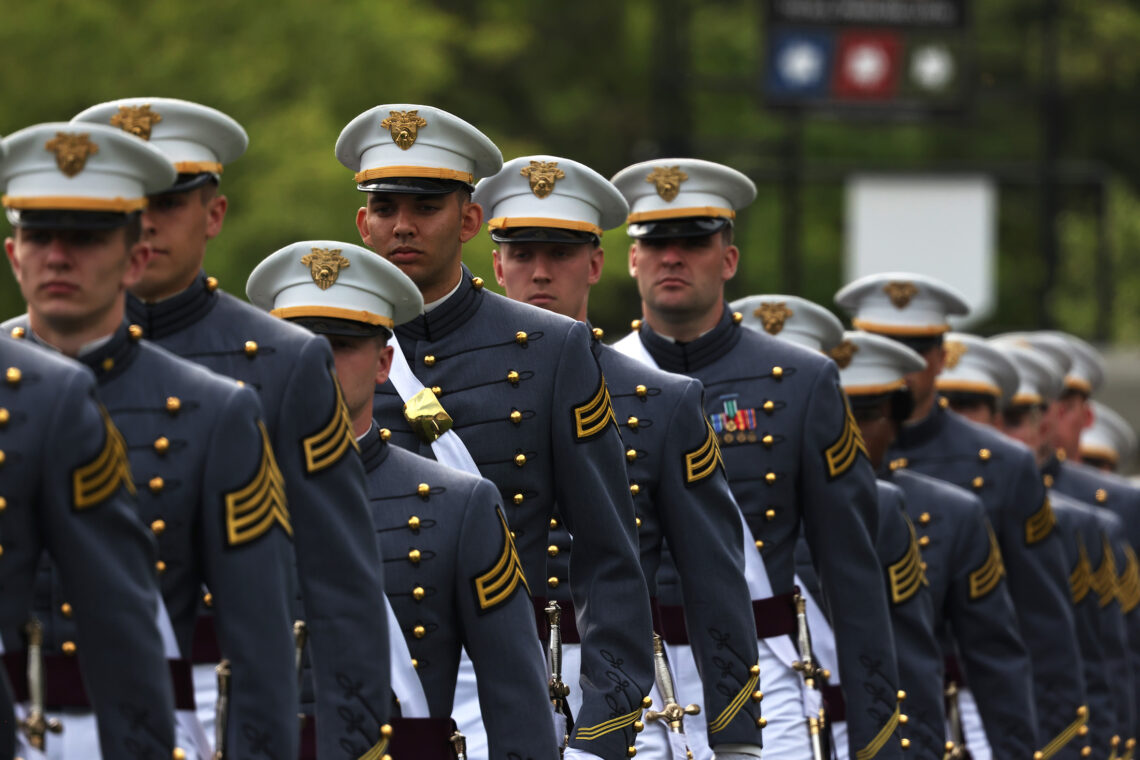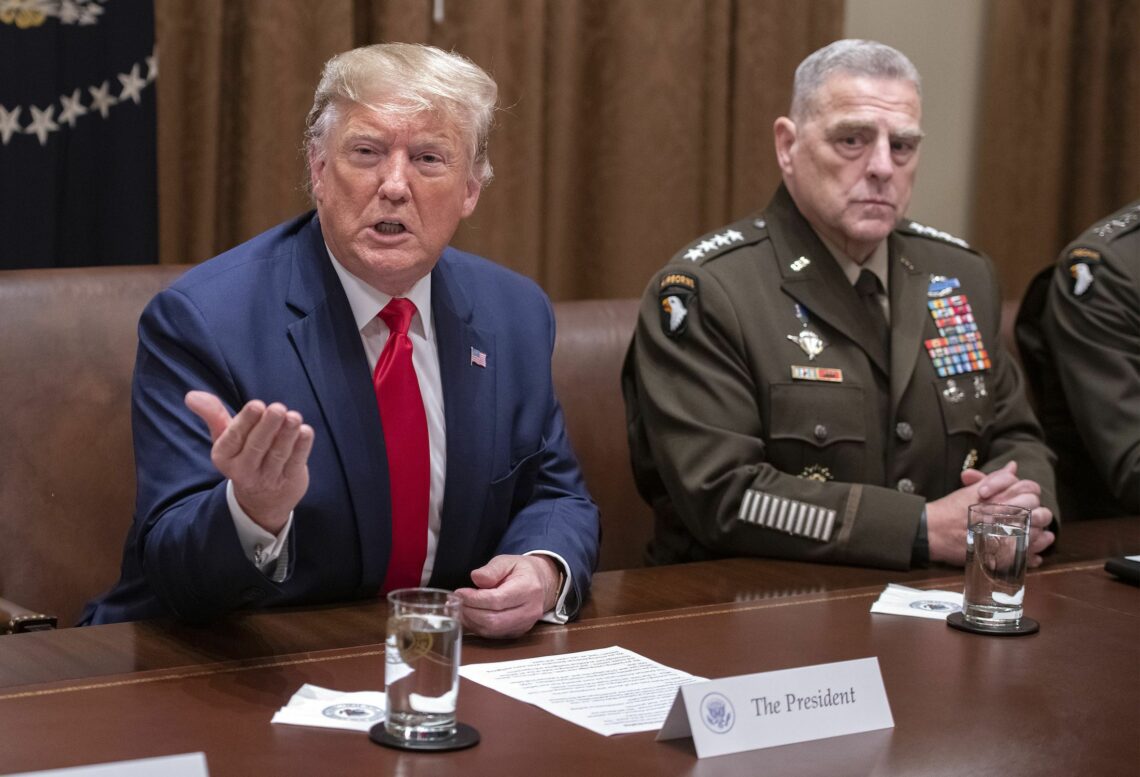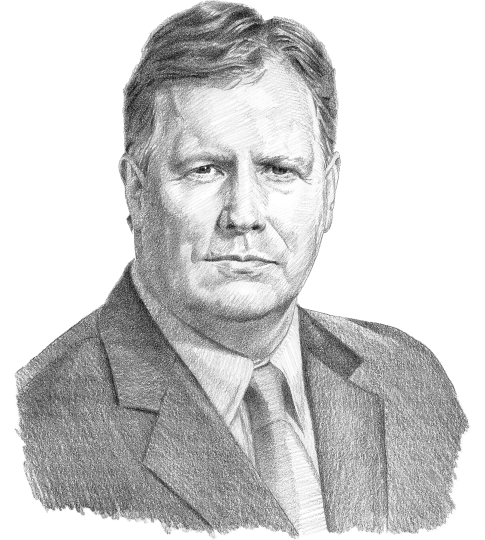U.S. civil-military tensions could raise long-term issues
Stable civil-military relations have been a hallmark of U.S. military power. But the country’s armed forces have recently been drawn into divisive political issues. The prospect of further strained relations may pose a distraction for the Pentagon, affecting military morale.

In a nutshell
- Stable civilian relations are a pillar of the U.S. military
- Recent political debates have raised tensions
- Morale, performance and funding could suffer
Stable civil-military relations have long been a hallmark of American military power. Recently, however, the armed forces have been swept up in divisive partisan political issues in a manner not seen in the United States for decades. The prospects for strained relations among civilians and military could spill over, hampering readiness and operational practices in the near term.
For now, this challenge seems more a possibility than a reality. Nevertheless, the issue of civil-military relations will unquestionably attract more media attention and political scrutiny. The potential for these disputes to serve as a distraction for the Pentagon and hinder morale and performance should not be discounted.
Past as prologue
The U.S. military was established with the premise that civilian military leaders should always have the ultimate authority over the activities of the armed forces, and that both enlisted and military personnel are bound by oath to their allegiance to the U.S. constitution. This relationship has endured over the history of the republic, though not always without friction. Civil-military tensions erupted periodically over the course of the American Revolution, not only between senior commanders and the Continental Congress but also among the ranks, most notably during the Newburgh Conspiracy of 1783.
Nor did the establishment of the U.S. Constitution (1787) mitigate future confrontations. In modern times, a touchstone for the debate was Samuel P. Huntington’s “The Soldier and the State: The Theory and Politics of Civil-Military Relations” (1957). Huntington warned against drifting from a traditional model where military leaders and civilian leaders operated in distinctly different spheres, with the armed forces focusing strictly on military affairs. Another important work was “The Professional Soldier: A Social and Political Portrait” by Morris Janowitz (1960), which argued that the professional military had devolved into technical “military managers,” as opposed to ethically driven, selfless, warrior-servants.
Recent strains reflect the more challenging conditions of the post-Vietnam era.
The greatest period of tension occurred in the wake of the Vietnam War (1973) and protests against the military draft (mandatory conscription). Officers were accused of being self-serving careerists, while respect for the U.S. military dropped to historic lows. A military reform movement briefly flirted with unionizing the armed forces. Much of the criticism implicitly drew on the influence of Huntington and Janowitz.
In the 1980s, tensions greatly reduced and respect for the armed forces dramatically improved. Despite occasional flare-ups, such as President Bill Clinton’s confrontation with senior military leaders on gay people serving in uniform, confidence in the armed forces and relations between civilian and military leaders has seen little concerted attention.
As with many aspects of his administration, President Donald Trump elicited some controversies, such as with the role played by military personnel during the June 2020 demonstrations outside the White House at Lafayette Square in Washington, D.C. Such partisan disputes and controversies, however, accompany virtually every president at one time or another. The present issue, however, is if more sustained and systemic tensions are emerging – reflecting the more challenging and debilitating conditions of the post-Vietnam era.
Controversies in the ranks
One issue that has persistently dogged the military for decades is sexual abuse and violence. This has tracked the expansion of women in the ranks of the armed forces (currently 14.4 percent in the active forces and 17.9 percent in the reserve forces), and the increasing number of married personnel in the services (56.4 percent in the active forces and 48.2 percent in the reserve forces).
A resulting tension is an ongoing Congressional effort to change how the U.S. military prosecutes criminal sexual abuse cases. Proponents argue that greater safeguards are needed to protect soldiers and families, while contend that changes to the military justice system will undermine order and discipline and command authority. Both sides say the issue exacerbates concerns that the officer corps is becoming risk-averse, and less effective in ensuring the welfare of military members and their families.
Another subject which has troubled civil-military leaders is military service by transgender individuals. Policies have whipsawed back and forth: both the Obama and Biden administrations considered transgender service an important equality issue, while the Trump administration viewed the incompatibility of transgender service as a physical and mental health and operational readiness issue. In the debate, military leaders were caught in the middle of what is a public, highly divisive subject, even if only a few thousand transgender persons serve in the active and reserve forces (0.7 percent of the military).

Another concern that has received significant attention lately is the presence of violent political extremists in the military ranks. This issue came to prominence after the riot at the U.S. Capitol building on January 6, 2021, when protestors disrupted the Congressional confirmation of the presidential election results. According to a May 22 report by the Washington Post, “[a]t least five service members face federal charges for allegedly participating: an active-duty Marine Corps officer who was arrested last week, two part-time soldiers in the Army Reserve and two in the National Guard.”
In response, the White House directed that the Pentagon be included in a national effort to combat domestic extremism, to include monitoring service members for extremist activities. Critics argue these initiatives smack of political repression rather than a genuine concern over public safety. U.S. media outlet Defense One reported of one effort by two federal legislators, fielding complaints that revealed “training sessions and regulations that service members argue paint the military as fundamentally racist and support left-leaning groups while labeling conservative movements as extremist.”
Similarly, senior U.S. military commanders and officials have been mired in controversy over “anti-racism” training. One hallmark of this dispute was a recent Congressional hearing where senators grilled the chairman of the Joints Chiefs of Staff over the use of critical race theory in diversity training in the armed forces. In another case, the senior officer in the U.S. Navy was criticized for including the scholar Ibram X. Kendi’s “How to Be An Antiracist” in a professional reading list for naval officers. Similar controversies have erupted over the teaching of anti-racist doctrines at the military service academies. Critics contend that rather than combating racism, the teachings stigmatize individuals by race and undermine equal rights protections.
There are no signs that acrimonious partisan disputes in the U.S. will abate.
A recent study released by one group of Congressional leaders argues that the political controversies are distracting and undermining the readiness of the armed forces. Published in July 2021, “A Report on the Fighting Culture of the United States Navy Surface Fleet” concluded, “[t]here was a broad consensus across interviewees on numerous cultural and structural issues that impact the morale and readiness of the Navy’s surface force. These include: an insufficient focus on warfighting skills, the perception of a zero-defect mentality accompanied by a culture of micromanagement, and over-sensitivity and responsiveness to modern media culture.”
The momentum of these issues has revived debates over whether civilian leaders are being overly intrusive in injecting political issues into military culture, operations and practices. Others ask if military leaders are intentionally or inadvertently engaged in supporting partisan political activities to the detriment of good order and discipline in the services. The debate was accentuated by media reports about a recently released book by the Washington Post’s Carol Leonnig and Philip Rucker, “I Alone Can Fix It,” which includes a claim that the chairman of the Joints Chiefs of Staff feared that former President Trump considered organizing a military coup to remain in office. The reporting exacerbated acrimony on all sides of the political spectrum over the appropriate behavior from military and political leaders.
There is no question that the hyper-political debates in the public sphere have spilled over into U.S. military affairs. The issue is whether these political disputes will have a debilitating impact on recruiting, retention, readiness and operational performance in the future.
Scenarios
A significant factor that could exacerbate the current controversies is reduced funding for the armed forces, which could impact training and readiness. That, in turn, could affect retention in the services.
In addition, as the U.S. economy recovers from the effects of the Covid-19 pandemic, the military will have to compete more vigorously with the private sector to enlist new soldiers. If the military is funded through either continuing appropriations or at levels proposed by the president’s budget, real spending will decline.
That would inevitably hurt morale, recruiting, retention and readiness, and intensify concerns over the distractions of strained civil-military relations. Further, there are no signs that acrimonious partisan political disputes in the U.S. will abate. Indeed, it is far more likely that they will intensify and increasingly intrude into military matters. If these conditions persist for a few years, then the most likely scenario is that both the capabilities and the confidence in the military will decline.





